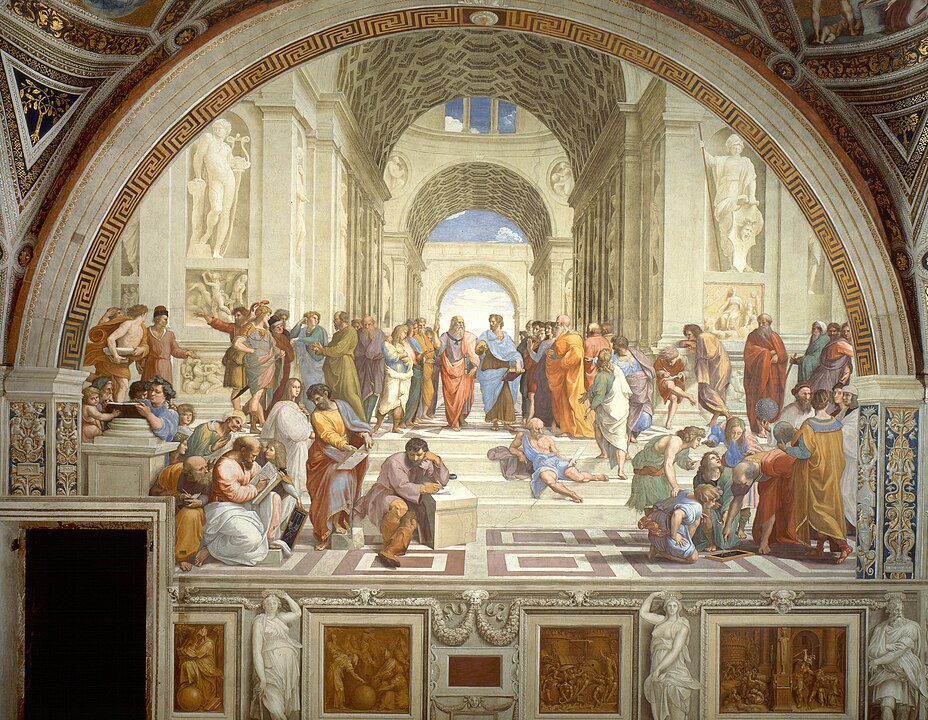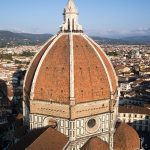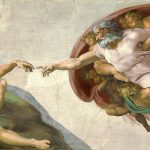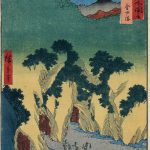
The Renaissance, meaning “rebirth” in French, was one of the most transformative periods in art history, lasting roughly from the 14th century to the early 17th century. It marked a departure from medieval artistic traditions, embracing realism, perspective, and the revival of classical ideals. Rooted in humanism, this era emphasized individual expression, scientific discovery, and a renewed appreciation for ancient Greek and Roman culture. The Renaissance not only revolutionized art but also influenced philosophy, literature, and science, shaping the course of Western civilization.
The movement began in Italy during the 1300s, particularly in Florence, before spreading to other European regions in the 15th and 16th centuries. Wealthy patrons, such as the Medici family (ruling Florence from 1434 to 1737), played a crucial role in funding artists and intellectuals. The Catholic Church, especially under popes like Julius II (reigned 1503–1513) and Leo X (reigned 1513–1521), commissioned grand religious works that blended spiritual devotion with artistic innovation. As Renaissance ideas spread across Europe, they inspired new interpretations in France, the Netherlands, and Germany, leading to the emergence of regional artistic styles.
At the heart of the Renaissance was a new focus on realism, drawing from the classical past and developing innovative artistic techniques. Artists sought to depict the human body with accuracy, using methods like chiaroscuro (light and shadow) and sfumato (subtle blending of colors) to create depth. Linear perspective, a key innovation developed in the early 1400s, allowed painters to craft three-dimensional compositions, transforming how space and distance were portrayed. These advancements laid the foundation for modern artistic principles, emphasizing observation, proportion, and emotion.
This article explores the origins, key figures, artistic techniques, and historical events that defined the Renaissance. From the masterpieces of Leonardo da Vinci (1452–1519) and Michelangelo (1475–1564) to the architectural feats of Filippo Brunelleschi (1377–1446), the Renaissance was an era of unparalleled creativity. We will examine how artistic innovation spread beyond Italy, how patrons shaped the movement, and how Renaissance ideals continue to influence modern culture. By the end, readers will understand why the Renaissance remains one of the most significant and studied periods in world history.
1. The Historical Context Behind the Renaissance
The Renaissance emerged in response to dramatic societal changes following the decline of the Middle Ages. The 14th century was marked by war, famine, and the devastating Black Death (1347–1351), which killed an estimated 25–50 million people across Europe. This crisis weakened feudal structures, leading to the decline of medieval institutions and the rise of a more individualistic society. As Europe recovered, a new intellectual movement—humanism—began to take shape, emphasizing the study of classical texts and human potential.
Greek and Roman antiquity played a significant role in shaping Renaissance thought and art. Scholars rediscovered the writings of philosophers like Plato (427–347 BC), Aristotle (384–322 BC), and Cicero (106–43 BC), inspiring a renewed focus on reason and empirical observation. This revival manifested in art through the use of proportion, symmetry, and realistic human forms, mirroring the ideals of classical sculpture and architecture. Petrarch (1304–1374), often called the “Father of Humanism,” was instrumental in reviving interest in ancient texts, setting the stage for the intellectual flourishing of the Renaissance.
Economic prosperity also contributed to the emergence of the Renaissance, particularly in Italy’s thriving city-states. Florence, Venice, and Milan became centers of trade, banking, and commerce, allowing for the accumulation of immense wealth. The Medici family, under Cosimo de’ Medici (1389–1464) and later Lorenzo de’ Medici (1449–1492), became some of the most influential patrons of the arts. Their financial support enabled artists to pursue ambitious projects, further accelerating the artistic and intellectual rebirth.
Additionally, the weakening of the Catholic Church’s authority after events like the Western Schism (1378–1417) opened new avenues for artistic and intellectual exploration. While religion remained a dominant force, the Renaissance encouraged a more secular perspective, celebrating human potential and worldly beauty. Art became a means of self-expression, rather than just a tool for religious instruction. This shift set the stage for a new era of creativity, where artists were recognized as intellectuals rather than mere craftsmen.
2. The Birthplace of the Renaissance: Why Italy?
Italy was the perfect setting for the birth of the Renaissance due to unique political, economic, and cultural conditions. Unlike the centralized monarchies of France and England, Italy was divided into independent city-states, such as Florence, Venice, and Rome. These regions competed for prestige, wealth, and artistic innovation, fostering an environment where creativity thrived. This rivalry led to significant investments in architecture, sculpture, and painting, elevating Italy as the cultural epicenter of Europe.
Florence played a pivotal role in the early Renaissance (c. 1300–1450), largely due to its prosperous banking industry. The Medici family, one of the wealthiest and most powerful families in Europe, emerged as major patrons of the arts. Cosimo de’ Medici (ruling from 1434–1464) was instrumental in funding artists like Donatello (1386–1466) and Filippo Brunelleschi. His grandson, Lorenzo the Magnificent (ruling 1469–1492), further supported figures like Leonardo da Vinci, Michelangelo, and Botticelli (1445–1510).
Beyond financial support, Italy’s historical connection to the Roman Empire played a significant role in shaping Renaissance art. The ruins of ancient Rome, particularly structures like the Pantheon (completed in AD 126) and the Colosseum (constructed AD 70–80), served as inspiration for Renaissance architects. Brunelleschi, after studying these ruins, applied classical principles of symmetry and proportion to his designs, leading to the construction of the Florence Cathedral dome (completed in 1436). This deep appreciation for antiquity set the Renaissance apart from the medieval period, which had largely abandoned classical aesthetics.
Italy’s geographic position also contributed to the Renaissance’s growth. As a major trade hub, Italian cities facilitated the exchange of ideas, goods, and cultural influences from the Byzantine and Islamic worlds. The fall of Constantinople in 1453 brought Greek scholars to Italy, carrying with them ancient manuscripts that had been lost in Western Europe. This influx of knowledge enriched Italian intellectual circles, further fueling the Renaissance movement.
3. Key Themes and Characteristics of Renaissance Art
One of the defining features of Renaissance art was its emphasis on realism and accurate human anatomy. Unlike the flat, symbolic figures of medieval art, Renaissance artists sought to depict people in natural poses with detailed musculature. This approach was influenced by the revival of classical Greek and Roman sculpture, which Renaissance artists studied intensively. Donatello’s David (c. 1440s) was one of the first Renaissance sculptures to revive the free-standing nude form, a practice not seen since antiquity.
Another major innovation of Renaissance art was linear perspective, which gave paintings a three-dimensional appearance. This technique was pioneered by Filippo Brunelleschi (c. 1415) and later perfected by Masaccio (1401–1428) in his fresco The Holy Trinity (c. 1425–1427). Perspective allowed artists to create realistic spatial depth, making their compositions more lifelike. By the late 15th century, artists like Leonardo da Vinci had fully mastered perspective, as seen in The Last Supper (1495–1498).
Chiaroscuro, the contrast between light and shadow, was another hallmark of Renaissance art. This technique helped create a sense of volume and three-dimensionality, making figures appear more dynamic and natural. Leonardo da Vinci’s Mona Lisa (c. 1503–1506) is a prime example, where the subtle shading around her face and hands adds a soft, lifelike quality. Later, Caravaggio (1571–1610) expanded on this technique during the Baroque period, taking Renaissance advancements even further.
Classical and mythological themes were also prevalent in Renaissance art, reflecting the renewed interest in Greco-Roman culture. While religious subjects remained dominant, many artists incorporated pagan deities, historical figures, and allegorical representations into their works. Sandro Botticelli’s The Birth of Venus (c. 1484–1486) exemplifies this trend, blending classical mythology with Renaissance ideals of beauty and harmony. This merging of Christian and classical influences defined Renaissance aesthetics, bridging the past with the present.
4. The Great Masters of Renaissance Art
The three most influential High Renaissance artists were Leonardo da Vinci (1452–1519), Michelangelo (1475–1564), and Raphael (1483–1520). Each contributed uniquely to the movement, expanding the boundaries of painting, sculpture, and architecture. Their works, completed in the late 15th and early 16th centuries, set the standard for artistic excellence for generations. This period, known as the High Renaissance (c. 1490–1527), saw the peak of realism, perspective, and human emotion in art.
Leonardo da Vinci, often called the “Renaissance Man,” was a painter, scientist, engineer, and anatomist. His Mona Lisa (c. 1503–1506) remains one of the most famous paintings in history due to its mysterious expression and masterful use of sfumato (soft shading). His Last Supper (1495–1498) demonstrates perfect perspective and psychological depth, capturing the dramatic moment of Christ’s betrayal. Beyond painting, Leonardo’s notebooks (c. 1480s–1519) contain groundbreaking studies in anatomy, engineering, and aerodynamics, showing the Renaissance’s interdisciplinary nature.
Michelangelo was primarily a sculptor but also excelled in painting and architecture. His masterpiece, the Sistine Chapel ceiling (1508–1512), features biblical scenes painted with dynamic movement, anatomical precision, and dramatic storytelling. His statue of David (1501–1504) is considered the pinnacle of Renaissance sculpture, depicting the biblical hero with perfect human proportions. Later, he designed St. Peter’s Basilica’s dome (1546–1564), influencing architectural styles for centuries.
Raphael, known for his balanced and harmonious compositions, gained fame with works like The School of Athens (1509–1511). This fresco, commissioned for the Vatican Palace, symbolizes the fusion of classical philosophy and Renaissance humanism. His portraits, including Pope Julius II (1511–1512) and Baldassare Castiglione (1514–1515), showcase his talent for capturing personality and psychological depth. Raphael’s early death in 1520 marked the decline of the High Renaissance and the shift toward Mannerism and Baroque art.
5. Sculpture and Architecture in the Renaissance
Sculpture during the Renaissance revived the naturalistic and idealized forms of antiquity. Unlike medieval sculpture, which often depicted stiff and stylized figures, Renaissance sculptors studied human anatomy and classical statues to achieve lifelike movement and proportion. Donatello’s Bronze David (c. 1440s) was groundbreaking as the first free-standing nude statue since ancient Rome. This shift toward realism influenced later sculptors, including Michelangelo and Gian Lorenzo Bernini (1598–1680) in the Baroque era.
Michelangelo’s marble David (1501–1504) is considered the greatest sculptural achievement of the Renaissance. Standing at 17 feet (5.17 meters) tall, the statue exemplifies idealized human beauty and strength. Originally commissioned for Florence’s Cathedral, it became a symbol of the Republic of Florence’s resilience against larger powers. The level of anatomical accuracy in David, including detailed veins and muscle definition, demonstrated Michelangelo’s mastery of the human form.
Architecture also saw a major transformation during the Renaissance, led by Filippo Brunelleschi (1377–1446). His Florence Cathedral dome (completed in 1436) was the first of its kind since antiquity, using a double-shell design and herringbone brick pattern for stability. This engineering feat inspired later architects, including Michelangelo, who incorporated similar principles in St. Peter’s Basilica (begun in 1506, completed in 1626). The ideal Renaissance architectural style, based on symmetry and proportion, was further developed by Leon Battista Alberti (1404–1472) in treatises like De Re Aedificatoria (1452).
By the late 16th century, Renaissance architecture began evolving into Mannerism, characterized by exaggerated proportions and complex compositions. Andrea Palladio (1508–1580), a Venetian architect, refined classical elements in designs like Villa Rotonda (c. 1566–1591). His book, The Four Books of Architecture (1570), influenced later styles, including Neoclassicism in the 18th century. The Renaissance’s architectural innovations laid the foundation for modern urban design and monumental public buildings.
6. The Role of Patrons and the Catholic Church
Wealthy patrons played a crucial role in funding Renaissance art, enabling artists to produce masterpieces that defined the era. The Medici family, ruling Florence from 1434 to 1737, was among the most influential art patrons. Cosimo de’ Medici (1389–1464) commissioned works from early Renaissance artists such as Brunelleschi, Donatello, and Fra Angelico (c. 1395–1455). His grandson, Lorenzo de’ Medici (1449–1492), continued this legacy by supporting Leonardo da Vinci, Botticelli, and Michelangelo.
The Catholic Church was another major patron of Renaissance art, using grand artistic projects to demonstrate its power and influence. Pope Nicholas V (reigned 1447–1455) began extensive rebuilding efforts in Rome, setting the stage for future Renaissance works. Pope Julius II (reigned 1503–1513) commissioned Michelangelo’s Sistine Chapel ceiling (1508–1512) and Raphael’s frescoes in the Vatican (1509–1511). Later, Pope Paul III (reigned 1534–1549) hired Michelangelo to paint The Last Judgment in the Sistine Chapel (1536–1541), reflecting the Catholic response to the Protestant Reformation (1517–1648).
Art was not just a reflection of religious devotion, but also a tool for political propaganda. Wealthy rulers and city-states used commissioned artworks to display their power, legitimacy, and cultural superiority. Ludovico Sforza (1452–1508), Duke of Milan, employed Leonardo da Vinci to paint The Last Supper (1495–1498) in the Convent of Santa Maria delle Grazie. The powerful Venetian Republic (697–1797) also invested heavily in the arts, supporting painters like Titian (c. 1488–1576) and Veronese (1528–1588).
Despite its close ties to power and religion, Renaissance art also introduced more secular themes. Portraiture became increasingly popular, celebrating individual identity and status. Jan van Eyck’s Arnolfini Portrait (1434) and Titian’s Portrait of Emperor Charles V (1548) exemplify this trend. This shift reflected humanist ideals, which placed individuals at the center of artistic and intellectual pursuits.
7. The Northern Renaissance: A Unique Interpretation
The Renaissance spread beyond Italy by the late 15th century, influencing France, the Netherlands, Germany, and England. The Northern Renaissance retained many Italian artistic techniques but emphasized detail, realism, and emotional depth. Unlike Italy, where fresco painting was dominant, Northern artists excelled in oil painting, allowing for greater precision and texture. The use of thin layers of oil paint (glazing) created vivid colors and intricate details, as seen in Jan van Eyck’s The Arnolfini Portrait (1434).
Albrecht Dürer (1471–1528) was one of the most influential figures of the German Renaissance. He studied Italian techniques during his visits to Venice (1494–1495, 1505–1507) but combined them with Northern traditions of meticulous detail. His woodcuts and engravings, such as Melencolia I (1514), reflected both Renaissance humanism and Germanic spirituality. Dürer’s Self-Portrait at 28 (1500) is one of the earliest examples of an artist depicting himself as a Christ-like figure, emphasizing individual genius.
The Dutch and Flemish Renaissance was also marked by religious and everyday realism. Hieronymus Bosch (c. 1450–1516) created fantastical, symbolic paintings like The Garden of Earthly Delights (c. 1490–1510), which offered moral and religious allegories. Meanwhile, Pieter Bruegel the Elder (c. 1525–1569) captured scenes of peasant life, as seen in The Peasant Wedding (1567–1568). His works reflected the growing interest in humanism and ordinary life, rather than just religious subjects.
England’s Renaissance was primarily literary, with William Shakespeare (1564–1616) emerging as its greatest figure. His works, written between 1590 and 1613, reflect Renaissance themes of human nature, individualism, and political power. The English Renaissance also saw artistic developments in portraiture, particularly in the court of Henry VIII (reigned 1509–1547). The German artist Hans Holbein the Younger (c. 1497–1543) became Henry’s official court painter, creating lifelike royal portraits, including Portrait of Henry VIII (1536–1537).
8. Science, Mathematics, and Art: The Renaissance Mind
The Renaissance was not just an artistic revolution—it was also a period of scientific and mathematical discovery. Artists like Leonardo da Vinci and Albrecht Dürer applied mathematical principles to create more precise compositions. The study of proportion, perspective, and anatomy allowed for greater realism in painting and sculpture. This blending of art and science set the Renaissance apart from earlier artistic movements.
Linear perspective, first developed by Brunelleschi (c. 1415), was further refined by artists like Piero della Francesca (c. 1415–1492) in The Flagellation of Christ (c. 1455–1460). Leonardo da Vinci’s notebooks (1480s–1519) contain detailed anatomical sketches, based on dissections of human cadavers. His Vitruvian Man (c. 1490) explores the ideal human proportions described by Vitruvius (c. 80–15 BC), an ancient Roman architect. Leonardo’s studies in optics, physics, and engineering influenced not just art but also scientific advancements in later centuries.
Astronomy and anatomy were also transformed during this period. Nicolaus Copernicus (1473–1543) published On the Revolutions of the Celestial Spheres (1543), proposing a heliocentric model of the universe. Andreas Vesalius (1514–1564) published De Humani Corporis Fabrica (1543), revolutionizing the study of human anatomy. His detailed dissections and medical illustrations laid the foundation for modern biology and medicine. These breakthroughs reflected the Renaissance spirit of questioning, observation, and empirical study.
Renaissance architecture was also influenced by mathematical principles. Leon Battista Alberti (1404–1472), in De Re Aedificatoria (1452), emphasized the use of geometric harmony and proportion. The golden ratio (1:1.618), found in nature and classical architecture, was frequently applied in Renaissance buildings and paintings. This fusion of art, mathematics, and science laid the groundwork for future artistic and scientific advancements in Europe.
9. The Decline of the Renaissance and the Rise of New Art Movements
By the late 16th century, the Renaissance began to decline, giving way to new artistic movements. Several factors contributed to this transition, including political instability, economic downturns, religious conflicts, and artistic evolution. The Sack of Rome in 1527, led by the troops of Holy Roman Emperor Charles V (1500–1558), devastated the city and disrupted patronage for artists. This event marked the beginning of Italy’s decline as the dominant artistic center of Europe, shifting influence to Spain, France, and the Netherlands.
Religious upheaval also played a crucial role in reshaping artistic patronage and themes. The Protestant Reformation (1517–1648), initiated by Martin Luther (1483–1546), challenged the authority of the Catholic Church, leading to reduced church commissions in Protestant regions. In response, the Catholic Counter-Reformation (1545–1648) sought to reassert religious power through dramatic, emotionally charged artwork. The Council of Trent (1545–1563) encouraged art that reinforced Catholic doctrine, influencing the emergence of the Baroque style.
By the mid-16th century, Mannerism (c. 1520–1600) emerged as a reaction to the idealized balance of High Renaissance art. Mannerist artists like Pontormo (1494–1557), Parmigianino (1503–1540), and Bronzino (1503–1572) exaggerated proportions, elongated limbs, and used unnatural colors, creating a sense of tension and drama. This departure from Renaissance harmony reflected the uncertainty and complexity of the time, as Italy faced foreign invasions, economic struggles, and shifting political power.
By 1600, the Renaissance had effectively ended, transitioning into the Baroque period (c. 1600–1750). Baroque artists, such as Caravaggio (1571–1610), Peter Paul Rubens (1577–1640), and Rembrandt (1606–1669), built on Renaissance techniques but introduced stronger contrasts of light and shadow (tenebrism), intense emotion, and grandiose compositions. While the Renaissance celebrated balance, rationality, and classical beauty, the Baroque sought to evoke awe, movement, and religious fervor. Despite its decline, the Renaissance left an indelible mark on Western art and culture, influencing future artistic movements, from Neoclassicism to Modernism.
10. The Lasting Legacy of the Renaissance
The Renaissance’s impact extended far beyond its original time period, influencing art, science, philosophy, and culture for centuries. Many artistic techniques developed during this era—such as perspective, chiaroscuro, and anatomical studies—remain fundamental in art education today. The Renaissance also set a precedent for the role of artists as intellectuals, rather than mere craftsmen. This shift elevated the social status of artists, allowing them to be recognized for their creative genius.
The Renaissance also shaped Western philosophy, literature, and education. The humanist ideals pioneered by Petrarch, Erasmus (1466–1536), and Thomas More (1478–1535) emphasized individual thought, critical reasoning, and classical learning. These ideas laid the foundation for the Enlightenment (c. 1685–1815), inspiring thinkers like John Locke (1632–1704) and Voltaire (1694–1778). Writers such as Shakespeare (1564–1616), Cervantes (1547–1616), and Machiavelli (1469–1527) were deeply influenced by Renaissance ideals, incorporating themes of human nature, politics, and morality into their works.
In modern times, the Renaissance continues to captivate scholars, artists, and historians. Museums around the world showcase Renaissance masterpieces, drawing millions of visitors who admire the brilliance of Leonardo da Vinci, Michelangelo, Raphael, and Titian. Books, films, and academic studies frequently explore Renaissance themes, demonstrating its enduring relevance. The rediscovery of Renaissance techniques in the 19th and 20th centuries influenced the Realist and Neoclassical art movements, as seen in the works of Jean-Auguste-Dominique Ingres (1780–1867) and William-Adolphe Bouguereau (1825–1905).
Ultimately, the Renaissance was more than just an art movement—it was a cultural revolution that reshaped the way people viewed the world. It bridged the gap between the medieval and modern eras, laying the groundwork for future advancements in science, philosophy, and the arts. Its celebration of beauty, intellect, and human potential continues to inspire generations. The Renaissance is a testament to the enduring power of creativity and the limitless possibilities of the human mind.
Key Takeaways
- The Renaissance (c. 1300–1600) was a cultural rebirth that transformed art, science, and philosophy.
- Innovations such as linear perspective (c. 1415), oil painting (c. 1420s), and anatomical studies (c. 1480s) revolutionized artistic techniques.
- Patrons like the Medici family (1434–1737) and the Catholic Church (Vatican commissions from 1447–1541) played a key role in funding the arts.
- The Renaissance influenced later movements, including Mannerism (1520–1600), Baroque (1600–1750), and Neoclassicism (18th century).
- Its legacy continues to shape modern art, literature, philosophy, and scientific thought.
FAQs
- What are the main characteristics of Renaissance art?
– Realism, perspective, anatomical accuracy, classical themes, and dramatic lighting techniques. - When and where did the Renaissance begin?
– It began in Florence, Italy, in the early 1300s and spread across Europe by the 15th and 16th centuries. - Who were the most famous Renaissance artists?
– Leonardo da Vinci (1452–1519), Michelangelo (1475–1564), Raphael (1483–1520), and Titian (c. 1488–1576). - How did the Renaissance influence modern art?
– It introduced fundamental artistic techniques and elevated artists to intellectual figures, influencing later styles like Neoclassicism and Realism. - What ended the Renaissance?
– Political instability (Sack of Rome in 1527), religious changes (Reformation 1517–1648), and the rise of new artistic movements like Mannerism and Baroque (c. 1600).




